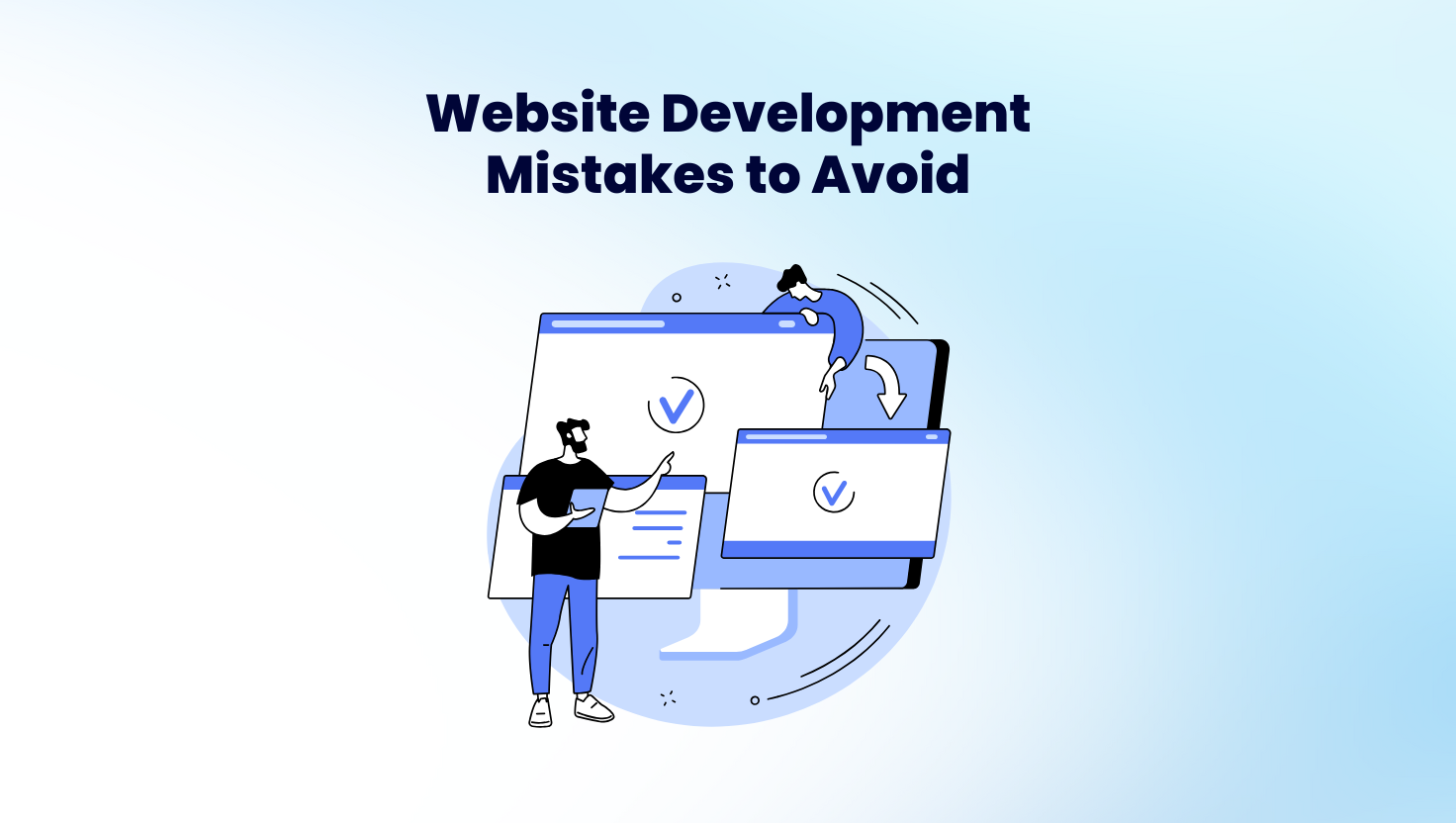
24 Feb 5 Common Mistakes to Avoid for Website Development
A website is more than just an online presence—it is a crucial asset that drives customer engagement, generates leads, and strengthens brand credibility. However, many businesses fall into common development mistakes that can impact website performance, security, and user experience. Issues such as slow load times, poor navigation, weak security, and ineffective SEO can result in lost traffic and reduced conversions.
This article highlights five major website development mistakes and provides actionable solutions to ensure your website performs at its best.
1. Neglecting Mobile Responsiveness
More than 60% of web traffic comes from mobile devices, making mobile responsiveness a non-negotiable aspect of website development. If a website does not adapt properly to different screen sizes, users may struggle with navigation, readability, and functionality—leading to high bounce rates.
Why It Matters
- Google prioritizes mobile-friendly websites in search rankings.
- A responsive design improves user experience and engagement.
- Mobile users expect fast and intuitive navigation.
How to Avoid It
- Use responsive web design techniques like flexbox and CSS media queries.
- Apply a mobile-first approach to ensure smooth performance on all devices.
- Use tools like Google Mobile-Friendly Test or BrowserStack to check responsiveness.
- Optimize touch interactions, ensuring that buttons and links are easily clickable.
2. Ignoring Website Speed Optimization
A slow website frustrates visitors and increases abandonment rates. More than half of users leave a site if it takes longer than three seconds to load. A fast-loading website is critical for user retention, SEO rankings, and conversion rates.
Why It Matters
- Improves user engagement and reduces bounce rates.
- Boosts SEO rankings, as Google prioritizes fast websites.
- A fast site enhances customer trust and satisfaction.
How to Avoid It
- Optimize images using compression tools like TinyPNG or ImageOptim.
- Enable browser caching to reduce repeated resource loading.
- Minify CSS, JavaScript, and HTML files to reduce page load time.
- Use Content Delivery Networks (CDNs) to distribute content globally for faster access.
- Choose a high-performance hosting provider with fast servers.
3. Weak Security Measures
Cybersecurity threats like SQL injections, cross-site scripting (XSS), and brute-force attacks can compromise your website’s data and functionality. Many businesses fail to implement strong security protocols, making their websites vulnerable to attacks.
Why It Matters
- Prevents data breaches and protects user information.
- Enhances credibility and customer trust in your business.
- Avoids legal issues and financial losses due to cyberattacks.
How to Avoid It
- Use HTTPS by installing SSL certificates to encrypt data.
- Regularly update CMS, plugins, and themes to patch vulnerabilities.
- Implement firewalls and security plugins to block malicious attacks.
- Use two-factor authentication (2FA) to strengthen login security.
- Perform regular security audits to identify and fix vulnerabilities.
4. Poor SEO Implementation
A well-designed website is useless if no one can find it. Search Engine Optimization (SEO) is essential for ensuring your website ranks high on search engines and attracts organic traffic. Many businesses make SEO mistakes like not using keywords, ignoring meta tags, and failing to optimize content for search engines.
Why It Matters
- Drives organic traffic, reducing reliance on paid ads.
- Improves brand visibility and credibility.
- Higher search rankings increase conversions and sales.
How to Avoid It
- Optimize meta titles, descriptions, and headers with relevant keywords.
- Use structured data to help search engines understand your content.
- Ensure proper internal linking to improve page discoverability.
- Publish high-quality, relevant content regularly.
- Improve page speed and mobile responsiveness, as they impact rankings.
5. Overcomplicating the User Experience (UX)
A website should be intuitive and easy to navigate. Many businesses overload their sites with complex layouts, excessive animations, and unnecessary features, making it difficult for users to find what they need.
Why It Matters
- Simplifies navigation, improving user satisfaction.
- Boosts conversion rates by making it easier for customers to take action.
- Enhances accessibility and usability for all visitors.
How to Avoid It
- Keep navigation simple, with clear menus and logical page structures.
- Use consistent fonts, colors, and layouts for a cohesive look.
- Ensure call-to-action (CTA) buttons stand out and are easy to click.
- Conduct user testing to refine and improve the interface.
How to Redesign Your Website for Better Performance
If your website is suffering from low traffic, high bounce rates, or slow speed, it may be time for a redesign. A website redesign can help improve usability, security, and SEO, ensuring your site aligns with modern digital trends.
Steps to a Successful Website Redesign
-
- Analyze current performance using tools like Google Analytics.
- Define new goals based on user behavior and business needs.
- Update UI/UX design for a more modern and responsive layout.
- Optimize performance by improving speed, security, and SEO.
- Test and launch the new website, ensuring all functionalities work smoothly.
How PT. KDN Can Help You Build a High-Performing Website
Avoiding these mistakes is essential for ensuring your website remains secure, fast, and user-friendly. However, building and maintaining a high-quality website requires expertise in development, SEO, security, and UX design.
At PT KDN, we specialize in custom website development tailored to meet your business needs. Our services include:
- Professional Web Development – Scalable and future-proof websites.
- SEO Optimization – Ensuring higher visibility on search engines.
- Security Enhancement – Protecting your website from cyber threats.
- Performance Optimization – Faster loading times and smoother user experiences.
- Ongoing Maintenance & Support – Keeping your website updated and secure.


Sorry, the comment form is closed at this time.